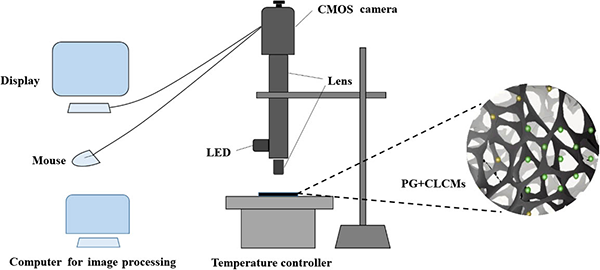Since graphene was first exfoliated from graphite, it has been extensively used in diverse applications, including energy storage, single-molecule gas sensors, and photovoltaic cells owing to its unique and superior electrical, thermal, mechanical, optical, and magnetic properties. Three-dimensional (3D) porous graphene is a new type of carbon nano-material composing of two-dimensional (2D) graphene on a macroscopic scale. It not only inherits the excellent properties of graphene, but also has high specific surface area, high porosity, excellent compressibility, and an interconnected conductive network owing to its special 3D micro-nano structure. These properties make it attractive for applications such as flexible electronic equipment, thermal engineering, and catalysis loading.
With the miniaturization and integration of devices, it is important to investigate the microscopic thermal properties to improve their performance. Conventional temperature measurement methods, such as thermocouples, thermistors, and infrared thermometers, cannot accurately distinguish the microscopic temperature distribution with a high spatial resolution and high temperature sensitivity. Different new approaches have been proposed to develop ultra-small thermal sensors for microscopic temperature measurement. These approaches include temperature sensors based on carbon nanotubes, optical fiber based, atomic force microscope, and magnetic nanoparticles. Although these methods provide a high spatial resolution, they are expensive, complicated, and not intuitive enough, making them unsuitable for practical applications, particularly for 3D porous graphene. Accurately measuring the microscopic temperature of graphene is still a challenge.
The research group from Nanjing University of Posts and Telecommunications and Nanjing University proposed a simple method to visually measure the microscopic temperature of 3D porous graphene. The results have been published in Chinese Optics Letters, Vol. 18, Issue 3, 2020 (Haoyan Jiang, Yaoyi Tang, Xiaohan Zeng, Ruiwen Xiao, Peng Lü, Lei Wang, Yanqing Lu. Visual measurement of the microscopic temperature of porous graphene based on cholesteric liquid crystal microcapsules[J]. Chinese Optics Letters, 2020, 18(3): 031201).
They used cholesteric liquid crystal microcapsules (CLCMs) as temperature sensors. Based on a CLCM (∼20 μm in size), they determined the temperature variation in a small area with an accuracy of 0.1 °C. By analyzing the color changes between two CLCMs, they demonstrated the temperature changes dynamically in a region with a diameter of approximately 110 μm. Furthermore, by comparing the color evolution among the three CLCMs, they visualized the anisotropic thermal properties in the micro-zone. This convenient and low-cost temperature measurement method is expected to further improve graphene-based devices.
“CLCMs here are used as temperature microsensors which can realize non-contact detection. We can obtain temperature by the color change of images. Not only the temperature distribution at the microscopic scale is measured in the thermal equilibrium, but also the thermodynamic properties can be detected in real time through quantitative visualization.” says the corresponding author Lei Wang, “Meanwhile, the 3D porous graphene itself exhibits a black color as it absorbs all the visible light, making it beneficial in detecting the light which is reflected by the CLCMs.”
The present work has verified the feasibility of 3D porous graphene microscopic temperature visualization based on CLCMs. In the future, the temperature sensitivity and sensing range of the CLCMs will be further optimized and the local thermal characteristics of graphene will be customized to measure. The temperature characteristics of various devices based on graphene will be studied, so as to optimize the design, achieve the high-efficient thermal management, and improve the overall performance of graphene devices. The authors believe that the proposed solution also paves way for the microscopic temperature measurement of other 2D and 3D materials and devices.

Visual system for microscopic temperature measurement of porous graphene based on CLCMs. The inset shows the distribution of CLCMs on the porous graphene.


